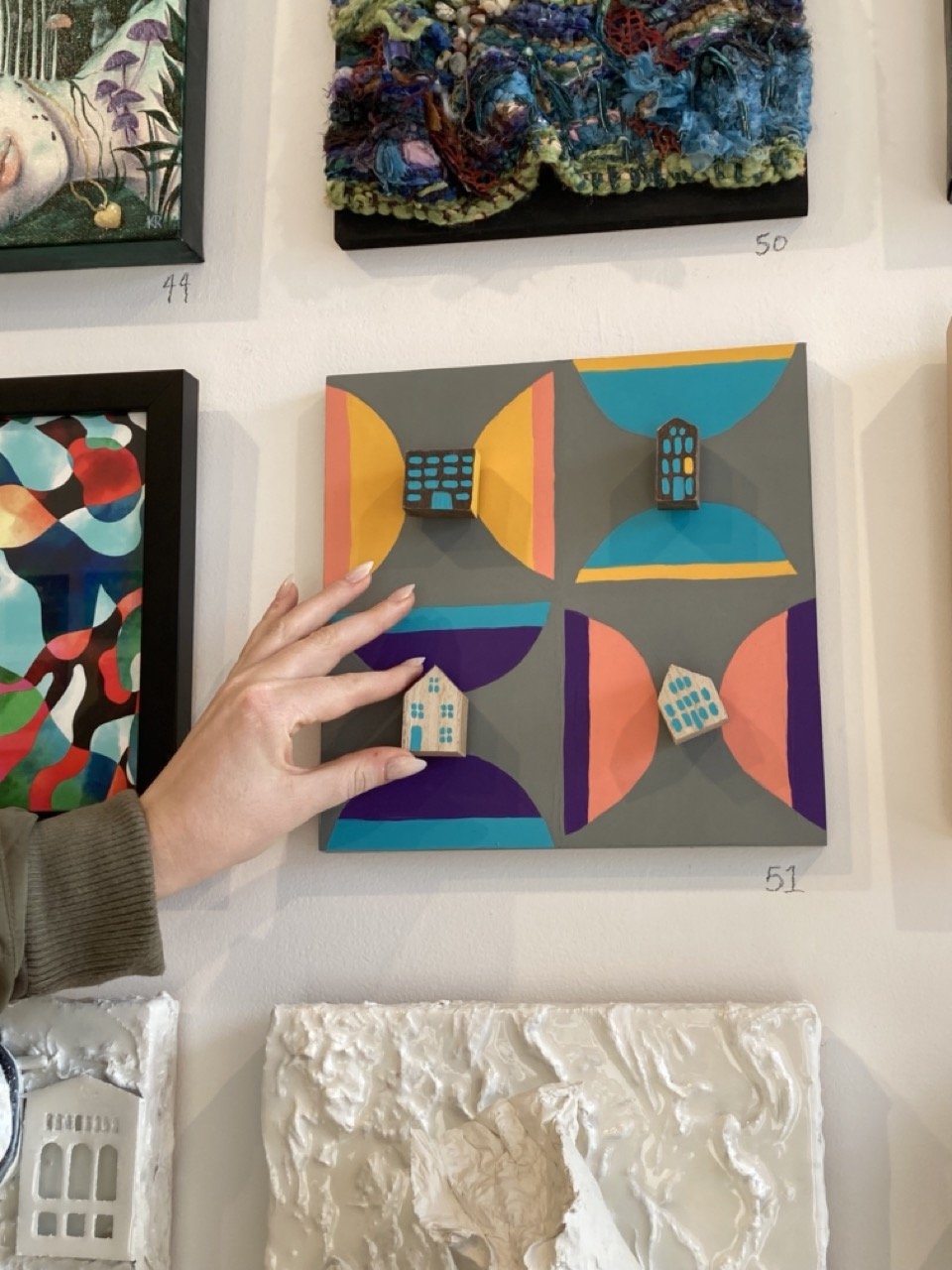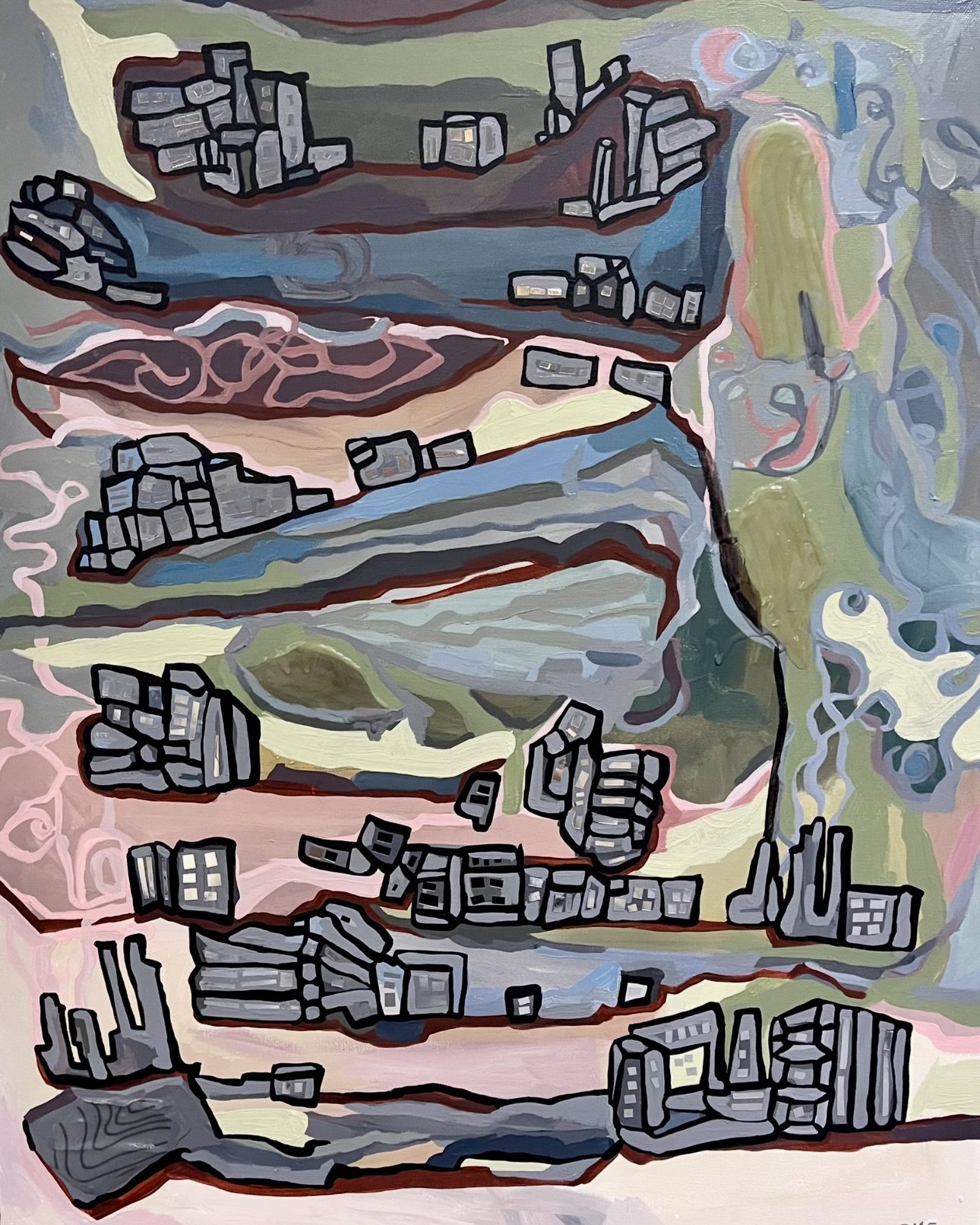
social activism art
the role of the artist is to document happenings, explore places (both emotional and physical), question possibilities, and share their experiences with others. the ultimate goals of art are two-fold: 1) to understand and express, and 2) to make others feel something or think about something (especially in a new or different way).
in interrogating challenges and realities related to our social, political, economic, and environmental contexts, social justice art is a powerful means of focusing attention, expressing emotion, highlighting injustice, and making connection possible.


houses (1 & 2)
it is only a matter of time until your house or flat or apartment is no longer yours. whether that is in 6 months or 5 years or 50 years or more, at some point a stranger will live there. they might leave the foundation or scrap it entirely. they might paint the walls or demolish the structures. they might move in or they might rent it out. they might cherish it like you do or they might have a completely different vision or need. & that's ok. this work invites play, reconfiguration, Whimsy, & a sense of neutrality around the idea of the loss of the current moment's house or housing situation.
using painted shapes in fastened shadow boxes, which seek to inspire reflections on time, on place, on season, & on generation, & using painted magnetic repurposed children's blocks that represent houses & homes, this 3-dimensional piece allows viewers to interact with the artwork by moving or turning the houses. In so doing, the work seeks to invite conversations around the notions of home & ownership & housing loss & change through a practice and lens of gratitude & mindfulness in the current moment.
in losing a sacred family home to the effects of late-stage capitalism (wherein the cost of elderly care & lack of social support lead to the selling-off of assets to those wealthy enough to collect family homes as rental properties), i invite the audience to indulge in a moment of playful joy, to appreciate whatever their the current life, home, & housing configuration is, to reflect on the necessity of home & the possibilities of housing & to interchange the buildings on magnets, as needed.
this piece was part of the annual TEN BY TEN show curated, organized, & hosted by jackson junge gallery in wicker park. the show included 300+ artists who created pieces that measure 10 inches by 10 inches.
Gallery
Jackson Junge Gallery
Show
TEN BY TEN
Year
2024
coffin show
This artwork was made as a physical embodiment of the emotional toll of capital accumulation.
The artwork was created out of sadness about the sale of a sacred place. This autumn, the rising cost of living, increasing cost of late-life care, and limited social service support combined for the artist’s family, ultimately leading to a difficult decision: to sell a small property in northern Michigan that had been in their family for five generations. It was the family’s original tie to that magical region of the world, where ultimately, generations later, the artist was born and raised.
The piece was also created out of frustration about the systems of capital accumulation and wealth concentration on our local, national, and global levels. The sacred land and home was sold to a non-local family who bought it in cash, sight-unseen, as they were interested in ‘expanding their portfolio of rental properties’. The external blue walls on the coffin feature words that express anger, frustration, and exasperation with this reality, the forces at play, and the systems of accumulation. The blue external walls also acknowledge the shared experience of the loss of land for profit, power, and gain, as related to experiences of gentrification and settler-colonialism.
The piece was also created out of deep appreciation, gratitude, and love. For five generations this property was an oasis, a refuge, a final resting place for family pets, and the continuation of a legacy of connectedness to land. It was where the artist’s great-great grandmother cooked fresh fish caught in the lake, great grandmother collected antiques, grandmother rowed a boat through the marsh and into town to buy butter as a child, mother slept on the porch with trains singing in the distance, and where the artist was stopped in her tracks each time she heard the call of the northern loon: its otherworldly sounds inspiring mindfulness, imagination, and focus, and ultimately inspiring her creative practice. The internal yellow walls resemble rays of sunshine and light, which feature words of the most special and sacred symbols and aspects of the property. The back center features the serenity, charm, and beauty of the property, featuring the cobblestone hut, its surrounding woods, hydrangea bushes, grassy field, and the shoreline of the inland lake.
In separating the blue external walls from the internal design, the artist seeks to keep the external forces and frustration outside of the memory of the space, so as to honor the sacred property, memory, and legacy and to lift it up as loved and not only as lost.
Gallery
Pilsen Arts & Community House
Show
coffin show
Year
2024
northside / southside / westside
Who does Chicago's water infrastructure work for? Where is drinking water safest in Chicago? Which neighborhoods have disproportionate amounts of lead service lines in the ground? Where have the pipes already been replaced and where do they remain underground? No amount of lead is safe for human consumption. So why is there a prevalence of lead in the homes and bodies of residents in our city? And why is there more prevalence in some areas than others? Why are we collectively complacent in inequitable lead service line replacement?
This work is a triptych. The triptych visually explores the prevalence, location, and layered nature of drinking water infrastructure in Chicago. More specifically, it explores the existence of more than 400,000 harmful lead service lines in our city, which provide our communities with contaminated drinking water that leads to lifelong health challenges for entire populations. The work draws from the findings of a Chicago Department of Public Health 2016 study on the location of cases of elevated blood lead levels in children under age 3 in Chicago. The triptych is broken into three geographical areas (Chicago's North, South, and West sides). This triptych collages and layers abstractions of maps, rounded and linear bits that symbolize cross-sections of lead and copper pipes (copper is the safer alternative to lead pipes). The triptych pieces use the colors of the Chicago flag, with red representing prevalence of lead, blue representing relatively safe drinking water, and white representing frustration with the system. Due to decades of legal, social, medical, and health inequities based on race, it is no coincidence that there is more prevalence of lead in the areas where the population is predominantly non-white. The purpose of the work is to call attention to the continued challenge of lead in our drinking water, to interrogate racist infrastructure system in our City, and to foster conversation around lead service line replacement in our city, with the hope that it will be more equitable in the near future.
The inherent inequities serve today as both a lasting legacy of segregation in Chicago, and as a present and future demonstration of the health disparities that occur in different geographical neighborhoods, all resulting from our layered, outdated, and inequitable water infrastructure. Our city will not work for everyone until everyone has safe drinking water, regardless of their zipcode. What will it take to make all three pieces entirely blue? How can we ensure all Chicagoans have safe drinking water?
Gallery
Jackson Junge Gallery
Show
Chicago Works
Year
2023
built & rebuilding
Our built environment is characterized by varied distribution of resources and amenities, including safe sidewalk systems, accessible water, clean air, affordable housing, multimodal transportation options, ample green space, and avenues for civic engagement and community cohesion. Our current system is marked by siloed, disconnected pockets of spaces that are financially, legally, and socially welcoming for those who have caused past harm and those who are re-entering society after incarceration.
Through the form of hands, varied hues of color, outlined shapes of buildings, fabrics that represent environmental challenges, and mirrors that invite the viewer to see themselves in the urban space, the two canvases seek to inform about the past and present nature of our justice and urban systems (left canvas) and to reimagine an alternative future of healthy, successful, dignified, or joyous lives that those who have caused past harm and those re-entering society deserve (right canvas) through a) contrasting shapes of the hands, as these are the body parts that shape our built environment (crossed arms vs welcoming handshakes), b) varied color hues (muted vs vibrant), and c) differing shapes (disjointed and isolated buildings vs connected communities of diverse architecture), all led by a restorative justice-informed perspective.
Gallery/Organizer
National Association for Community & Restorative Justice (NACRJ) conference
Year
2022
mis(remembering)
A two-part exploration of the JM Barrie quote, “God gave us memory so that we might have roses in December.”, together the two pieces represent different ways that memory can function - as a concrete experience that spreads & sprawls over time, serving as a reminder of joyous and or beautiful and/or abundant times (as represented in the piece titled REMEMBERING) or as a disjointed mix of partial thoughts, memories, & general emptiness (as represented in MISREMEMBERING). Both pieces use the shape and color of winter calendars as a nod to December, along with thorned roses in different forms. The purpose of these pieces is to tug on the threads of the quote and its meaning, as memory can simultaneously hold onto bold experiences of joy or growth or can distort experiences and moments. Memory can also be fragmented or missing entirely. When considering trauma, catastrophic thinking, and/or seasonal depression, memory can also be vital for recovery.
This diptych was created for the 2022 TEN BY TEN show at Jackson Junge Gallery in Chicago.
Gallery
Jackson Junge
Show
TEN BY TEN
Year
2022














